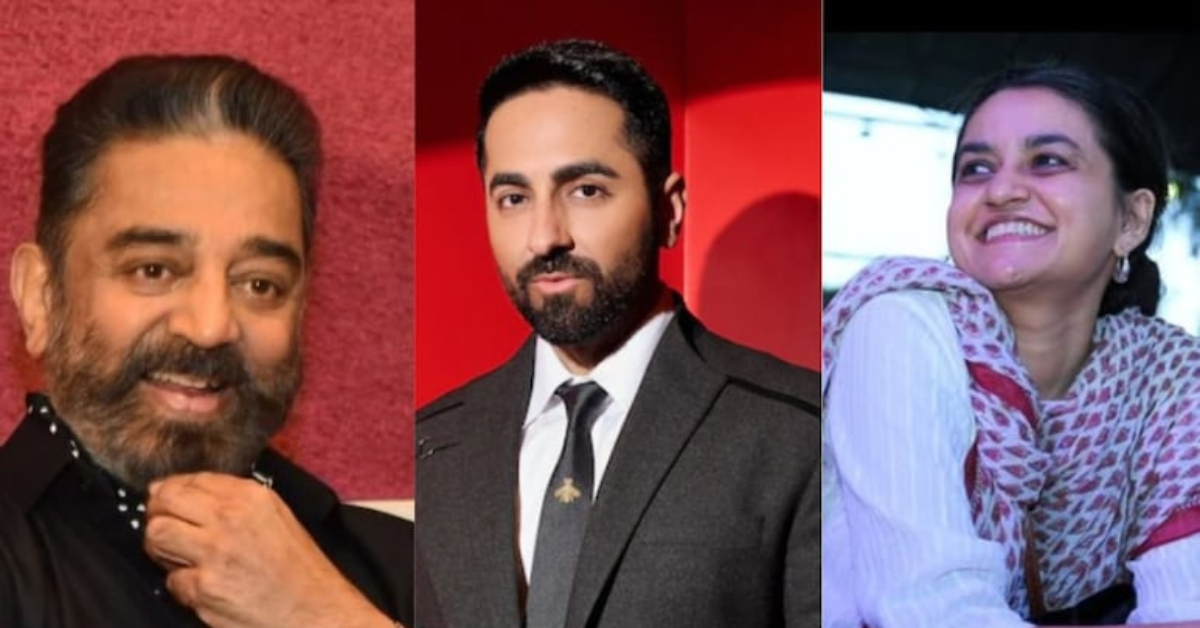In a landmark moment for Indian cinema, veteran actor Kamal Haasan, versatile performer Ayushmann Khurrana, and internationally acclaimed filmmaker Payal Kapadia have been invited by the Academy of Motion Picture Arts and Sciences (AMPAS) to become members of its Class of 2025. They are part of a carefully selected group of 534 artists and executives from across the world, reflecting the Academy’s growing commitment to diversity and global inclusivity.
This recognition is more than symbolic — it offers these artists a vote at the Oscars, shaping the future of world cinema. It also underlines the influence and reach of Indian storytelling in a changing cinematic landscape.
🔹 The Significance of the Academy Invite
Every year, the Academy invites a select number of artists and professionals from across the globe to become voting members. These invitations are extended to those who have made significant artistic contributions to film — whether through acting, directing, producing, writing, or technical excellence.
Being part of the Academy isn’t just a title; it gives members the power to vote for the Oscar nominations and winners and play a direct role in shaping cinema history. The Class of 2025 is notably inclusive, featuring individuals from more than 50 countries, and includes artists across genres, styles, and disciplines.
🔹 Kamal Haasan: A Lifetime of Excellence
Perhaps the most iconic name on this list, Kamal Haasan‘s inclusion is long overdue. With a career spanning over six decades, Haasan has worn many hats — actor, director, writer, producer, and even politician. His contribution to Indian cinema, especially Tamil cinema, is unmatched.
From Nayakan and Indian to Hey Ram and Vikram, Kamal Haasan has redefined cinematic storytelling time and again. His invitation to the Academy not only recognizes his past achievements but also acknowledges his continuing relevance in global cinema.
What It Means:
- Recognition of South Indian cinema on the world stage.
- Celebration of an artist who constantly experiments with genre and form.
- Opens pathways for more Indian actors from regional industries to enter global discourse.
🔹 Ayushmann Khurrana: Breaking Stereotypes with Every Role
Known for choosing unconventional scripts and portraying real, socially aware characters, Ayushmann Khurrana has become the poster boy for meaningful commercial cinema in India. From Vicky Donor to Article 15, Andhadhun to Shubh Mangal Zyada Saavdhan, he’s proven that content is king.
His inclusion in the Academy Class of 2025 reflects the rising respect for actor-driven cinema that tackles gender, sexuality, caste, and class with subtlety and authenticity.
What It Means:
- Recognition of new-age Bollywood.
- Encouragement for socially responsible storytelling.
- Visibility for a generation of Indian actors making bold choices.
🔹 Payal Kapadia: Voice of India in Global Art Cinema
Perhaps the most exciting inclusion is that of Payal Kapadia, a filmmaker who recently won the Grand Prix at the Cannes Film Festival 2024 for her film All We Imagine as Light. A graduate of the Film and Television Institute of India (FTII), Kapadia has been hailed as a torchbearer of India’s independent cinema movement.
Her work often reflects themes of memory, resistance, and the everyday poetry of life. With her inclusion, the Academy sends a strong message — that experimental, poetic, politically-conscious cinema has a place in the global conversation.
What It Means:
- Recognition for India’s independent film scene.
- A rare nod to female Indian filmmakers on the global stage.
- Opens doors for non-mainstream Indian films to enter Oscar conversations.
🔹 India’s Growing Impact at the Oscars
In recent years, Indian cinema has increasingly gained visibility at global awards. From “Naatu Naatu” winning Best Original Song to “The Elephant Whisperers” winning Best Documentary Short, India is no longer just a participant—it’s a contender.
The invitation of artists like Haasan, Khurrana, and Kapadia is a testament to this evolving influence. It sends a message that Indian cinema is rich in both scale and substance, and that its contributions deserve a seat at the table.
🔹 Other Notable Global Invitees
Apart from Indian artists, the Academy’s 2025 class includes notable names such as:
- Sandra Hüller (Anatomy of a Fall)
- Cillian Murphy (Oppenheimer)
- Greta Lee (Past Lives)
- Justine Triet (Director, Anatomy of a Fall)
- Dua Lipa (Singer & Actress, Barbie)
This diverse list represents the Academy’s ongoing efforts to reshape its identity in line with the evolving nature of cinema — not just Hollywood, but global, inclusive, and multivocal.
🔹 Why This Matters for Indian Cinema
Being invited to the Academy isn’t just ceremonial. It marks a shift in how Indian stories are being valued worldwide. With members like Haasan and Kapadia now having voting rights, India has a louder voice in selecting Oscar winners — a privilege that could influence how Indian films are nominated and awarded in the future.
Moreover, it could:
- Encourage Indian studios to push more films into the Oscar race.
- Offer better distribution opportunities for Indian art films abroad.
- Boost collaborations between Indian and international filmmakers.
🔹 The Road Ahead: A More Inclusive Oscars?
The Oscars have long faced criticism for lacking diversity — especially from non-Western countries. But in the last few years, there has been a conscious effort to diversify the Academy’s voting body, with more women, non-white individuals, and international artists joining the ranks.
The Class of 2025 is part of this movement. And the inclusion of Indian voices ensures that more culturally rooted, globally appealing stories from the subcontinent are finally being acknowledged.
🔚 Final Thoughts: A Win for Global Storytelling
The invitation of Kamal Haasan, Ayushmann Khurrana, and Payal Kapadia into the Academy’s Class of 2025 is more than a personal achievement — it’s a milestone for Indian cinema at large. It represents the recognition of India’s rich and layered storytelling tradition, spanning commercial, independent, and regional cinema.
It proves that stories from the heart of Mumbai to the lanes of FTII to the sets of Tamil action-thrillers can resonate across continents. As these new members bring their unique perspectives into Oscar voting rooms, one thing is certain: the future of world cinema just got a lot more Indian.



